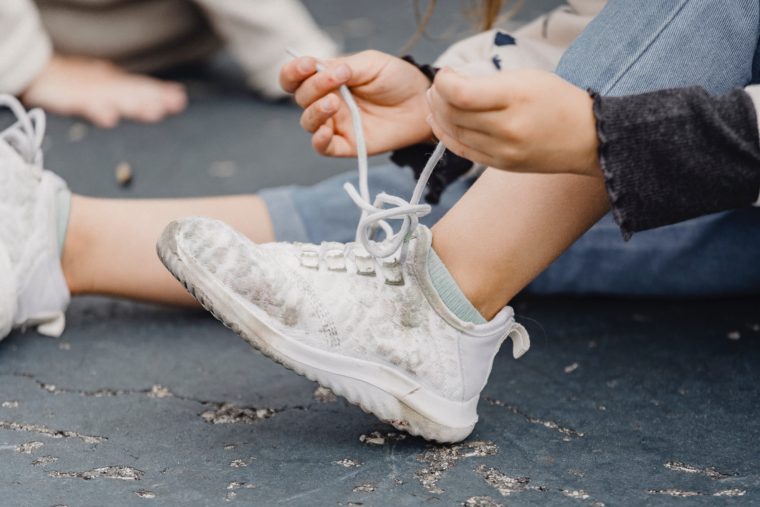Question: My 4th Grade Dyslexic Daughter Cannot Tie Her Shoelaces. How Can I Help Her?

Answer:
Most children master the art of tying their shoelaces around 5 or 6 years. That’s also the same time they are expected to master a certain level of reading.
If your daughter had difficulty reading at that age, it’s not uncommon for her to also have difficulty tying her shoelaces beyond the age of six.
In addition to mastering several motor skills, there is a level of body control and positioning that are necessary for tying shoelaces.
Things like:
- Postural stability
- The child’s ability to hold her trunk upright while tying the shoelaces.
- Positioning
- Doing different things with different body parts at the same time, which takes a lot of motor planning.
- Bilateral Coordination
- Your child’s ability to use both sides of her body at the same time.
- Visual Attention (Eye Teaming/Convergence)
- Your child must be able to direct both eyes to look at what she is doing.
- Visual Perception
- Your child’s ability to recognize, correctly identify, and interpret visual information.
- For children who are spatially challenged with left/right, above/under, over/under concepts, this is difficult so, use two-colored of laces.
- Sequencing and Motor Planning
- Many children with dyslexia have difficulty remembering multiple steps, much less in their correct order.
One of the things an Occupational Therapist (OT) teaches children is how to tie their shoelaces.
In the video below, in less than 2 minutes, Keri Wilmot (OT) demonstrates a simple way to teach your child with dyslexia to tie her shoelaces.
There’s no need to beat yourself up or plunge into the depths of despair just because your 9-year-old daughter can’t tie her shoelaces.
Schedule a few times daily to practice shoelace tying, using these tips, give positive feedback and guidance, and you’ll be a happy and proud mom, in less than 7 days.
Do you know any adults who are still unable to tie their shoelaces?

I never knew that about tying shoelaces. Thanks for that great tip to pass along. (Too many young kids are not diagnosed with the issue until later. Using shoelace dexterity can make it easier- and earlier- to diagnose and assist.)
You’re welcome, Roy. The more people you pass this information to, the more children will receive help.
My daughter has Down Syndrome and is having trouble completely tying her shoes. Sequencing is a big issue! That last pull-through is the issue for her. We do need to schedule more practice times daily! That’s a great reminder!
Dominique, I have a mentor who says, “Everything is figure-outable.” When we take the time to practice regularly, it makes almost everything become simple. Keep at it. Your daughter will get it eventually.
My son didn’t learn until he was 10 years old, and he had no choice because he started playing football and the cleats had laces. Until then I was happy to buy him velcro shoes. He wasn’t dyslexic, but always struggled with fine motor skills.
Francine, you are not alone in your choice. When you don’t know what to do, the easy default is to get the children velcro or slip-on shoes.
Hi Florence, my brother is dyslexic but was not diagnosed until high school (late 80’s or so) or so I think. It was different prior and there wasn’t much talk about it. I don’t remember what age he learned, but I do remember he struggled a lot and my sister and I would try to help him. We weren’t great teachers as we ended up doing it, lol but we tried. 🙂 Wish we had this video back then. Thanks for sharing and I will pass it on.
Yes, Samantha, it’s unfortunate that so many children with dyslexia went unidentified in times past. Because of that, their difficulties were disregarded or viewed negatively. As a result, few of them got the help they needed early enough to save them a lot of hurt and embarrassment.